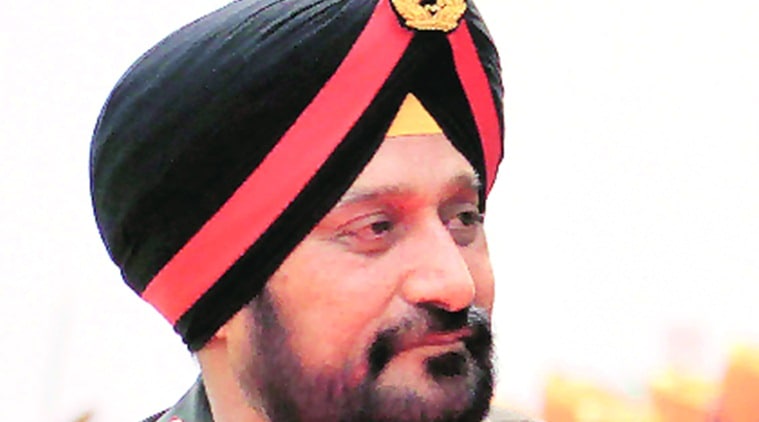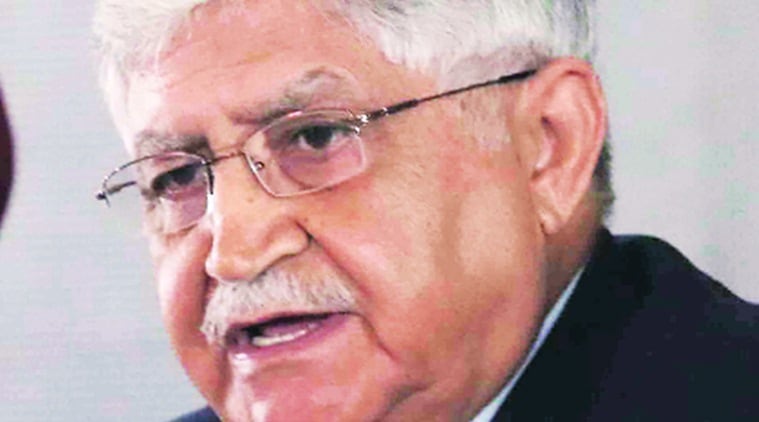Our main targets are the likes of Hafiz Saeed and Dawood Ibrahim. Whilst the deal with the Americans is being negotiated, caution needs to be exercised to avoid tricky end-user agreements that stymie our targeting options. Despite imposing a hefty $10-million bounty on Hafiz Saeed and declaring him an international terrorist, the US has not yet prioritised him as a target for neutralisation.

Military message: Israel and the US have traditionally believed in targeted killing of its enemies, be they in the form of spies or terrorists in nature.
Group Captain Murli Menon (Retd)
Group Captain Murli Menon (Retd)
Defence analyst
Countries such as Israel and the US have traditionally believed in targeted killing of its enemies, be they in the form of spies or terrorists in nature. These nations have thus bestowed the requisite authority for such killings on their executive heads.
India, on the other hand, has lived for decades with terror elements operating from across the border with virtual impunity. Our counter-terror campaign perforce was limited to ground operations within our territory. Besides the inability to do precise counter-terror targeting across borders for want of intelligence-gathering and hard kill wherewithal, there was always the fear in the minds of the decision-makers, of escalating to an all-out war from a counter-terror strike.
The January 4 MQ 9 Reaper attack by the US at the Baghdad airport, reportedly using upgraded Hellfire missiles, killing Major-General Qassem Soleimani, head of Iran’s Qudds Force and his aides, has
lessons galore for the political and military analysts alike.
Whilst the political and moral correctness of the Soleimani killing is a matter for a different discussion, the military lessons of the drone strike are very revealing. If the video footage doing the rounds in the social media is indeed a genuine one, the drone strike was militarily perfectly executed to take out a high-value target, with no collateral damage and no involvement of large-scale air or ground military assets. Use of close- in laser designation by friendly forces is well-nigh a possibility, given the apparently high accuracy of the strike. The accompanying radio chatter of the video clip is revealing too, in terms of the lethality of the unmanned weapon system.
The advent of hard kill drones such as the Predator and Reaper has indeed morphed the aerial targeting arena dramatically, as we well know. India is in the midst of negotiating the purchase of MQ 9 Reapers, initially for the Indian Navy and possibly follow-ons for the other two services. Hellfire missiles are already on order with the IAF Apache attack helicopters.
Given the security scenario in our neighbourhood, there is no gainsaying the importance of having this weapon system in the inventory of our Army, Navy and the IAF. The deal for the Indian Navy is being negotiated by the Americans who clearly have their own interests in mind, possibly to target international terrorists in the maritime domain around India.
But India knows better: our main targets are the likes of Hafiz Saeed and Dawood Ibrahim. Whilst the deal with the Americans is being negotiated, caution needs to be exercised to avoid tricky end-user agreements that stymie our targeting options. Despite imposing a hefty $10-million bounty on Hafiz Syed and declaring him an international terrorist, the US has not yet prioritised him as a target for neutralisation.
For India, his urgent killing is a political signal for greater strategic dominance in the war on terror. So, let’s assume that we work around the American penchant for protecting the vested interests of their erstwhile Cold War ally Pakistan, tailoring our tactical intelligence gathering network to obtain real time intelligence on desired targets within Pakistan, and elsewhere in the neighbourhood, should it so warrant.
India already has the signal intelligence capability in terms of our Phalcon AWACS, space assets and other ground and air sensors with our agencies and armed forces. These need to be optimised to facilitate timely hard intelligence on our intended terror targets. This would be a challenge, given the existing lay of the land in terms of the international border, LoC and the hard fact that humint (human intelligence) would be hard to obtain in most cases. That’s where the ingenuity would be called for to optimise our sensors and their triangulation capabilities.
The other important aspect is the fact that deniability of a drone hard kill would be difficult in our context, tending to push such anti-terror missions into the realm of a hot shooting war. This, of course, would not be a desirable option, given that ideally, we would like to emulate the modus operandi of the Americans in Afghanistan, Federally Administered Tribal Areas (FATA) or the Israelis in the Middle East.
Having our strategic ally Israel on board would be highly desirable. The mistakes made earlier by our then leadership in not enlisting Israel’s assistance in neutralising our adversary’s nuclear capability before the Kahuta reactor went critical in the eighties, cannot be allowed to be repeated. We need to train with Israel to carry out such anti-terror missions effectively. So, the challenge in our context is to train for such missions realistically and tailor our mission within the operational parameters of our air war strategy.
Given the uncanny political situation in our country, such high-profile targeted attacks may not find the political sanction across the aisles in our Parliament (as indeed is being witnessed in the US these days). Therefore, it is imperative that we have a gutsy political leadership to go through with such missions. Peacetime counter-terror missions employing drones would be even more challenging in this context.
Though it is not part of the brief as yet for the newly created Chief of Defence Staff, the government may consider bringing counter-terror ops under his ambit, mainly so the equipment induction and operational training could be dovetailed in a truly tri-service manner. Drone warfare has come to stay.
So, whilst aiming for indigenous technology to bear fruit, India should exploit the windfall in terms of the expected Reaper acquisition from the US to build capabilities towards indigenisation and an effective counter-terror campaign. Pre-emptive aerial targeting of national terror enemies has become an accepted norm in modern geopolitics. Having made a beginning with our Uri and Balakot strikes, it is high time India extended its capabilities to the realm of targeted drone kills.





















 General V P Malik
General V P Malik

























































